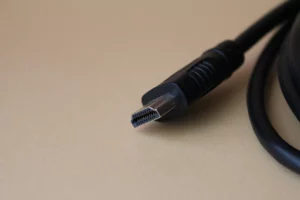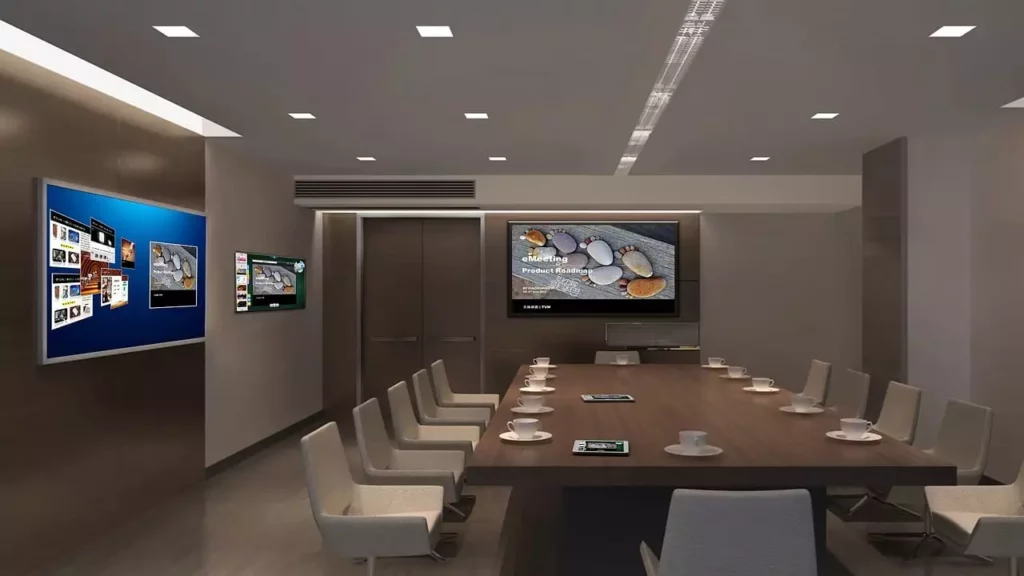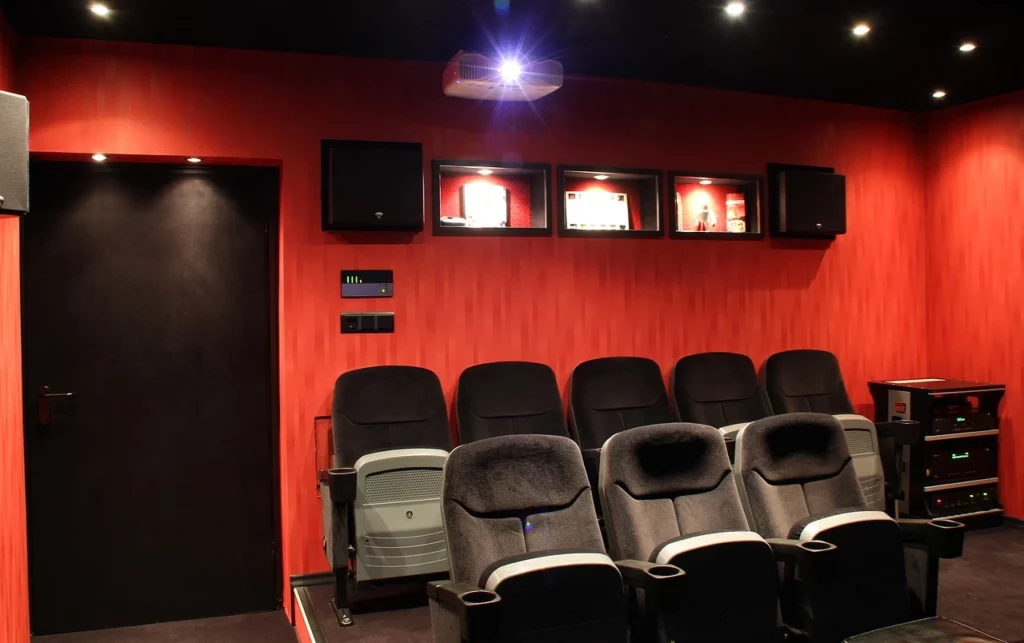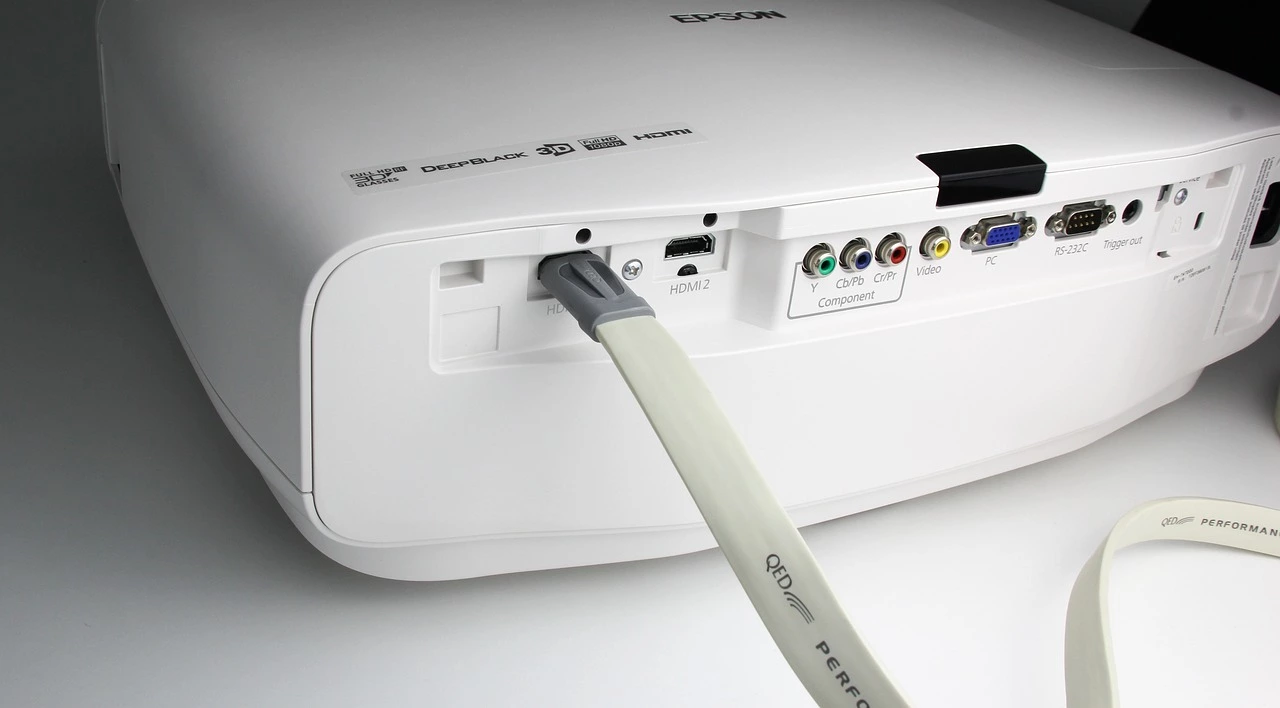HDMI (High-Definition Multimedia Interface) is a technology for transferring audio and video signals from a source to a video display or audio video receiver (AVR). HDMI cables are available in most tech stores or on the web. Most people however don’t realize that not all HDMI cables are the same and capabilities and prices vary widely.
HDMI Cables
Most HDMI cables use up to 19 very thin copper wires but there are some active HDMI cables that use fiber optics for some of the internal lines.
Over the years, various versions of HDMI have been introduced to the market with improved features and capabilities. Here’s a summary of the different HDMI versions over time:
- HDMI 1.0: This was the first version of HDMI released in December 2002. It supported resolutions up to 1080i and 8-channel, uncompressed audio.
- HDMI 1.2: This version was released in August 2005 and added support for one-way Ethernet communication.
- HDMI 1.3: Released in June 2006, this version added support for deeper color spaces and higher video resolutions up to 1080p. It also introduced the ability to transmit up to 8 channels of lossless, compressed audio.
- HDMI 1.4: This version, released in May 2009, added support for Ethernet communication, audio return channel (ARC), and 3D video capabilities.
- HDMI 2.0: Released in September 2013, HDMI 2.0 added support for 4K resolution video (up to 3840 x 2160 pixels) at a refresh rate of 60Hz, as well as increased bandwidth (up to 18 Gbps) to support advanced features such as High Dynamic Range (HDR).
- HDMI 2.0a: This version, released in April 2015, added support for HDR metadata, which allows for a wider color gamut and more vivid and detailed images.
- HDMI 2.1: Released in November 2017, HDMI 2.1 added support for higher refresh rates (up to 120Hz) and increased bandwidth (up to 48 Gbps), as well as additional features such as Variable Refresh Rate (VRR) and Quick Frame Transport (QFT).

Active vs Passive HDMI Cables
HDMI Cables come in generally two types; active and passive.
Active HDMI Cables: Active HDMI cables contain built-in electronics that regenerate and amplify the HDMI signal. This allows the cable to transmit longer distances without any loss in quality or signal degradation. Active HDMI cables are ideal for applications where the source and display devices are located far apart, or where the cable will be running through walls or other obstructions. In most cases, the active HDMI cable will come with the power adapter included. Some models may also have a built-in USB connector, which can be used to draw power from a USB port on a computer or other device.
It’s important to note that active HDMI cables must be powered in order to work correctly. If the power adapter is not connected, or if there is a problem with the power supply, the cable will not be able to regenerate and amplify the HDMI signal, and the image and audio quality may be compromised.
Passive HDMI Cables: Passive HDMI cables do not contain any active electronics. They simply transmit the HDMI signal from one device to another without any signal processing or amplification. Passive HDMI cables are typically shorter and less expensive than active HDMI cables. They are ideal for applications where the source and display devices are located close to each other, or where the cable will not be running through any obstacles.
HDMI Cable Lengths
As with any medium transporting information, the distance traveled will impact the quality and performance of the devices. The maximum effective length of an HDMI cable depends on a number of factors, including the version of HDMI, the resolution and refresh rate being transmitted, and the quality of the cable itself. Here are some general guidelines for the maximum effective lengths of different HDMI versions:
- HDMI 1.0 to 1.4: For standard 1080p resolutions, a cable length of up to 15 meters (49 feet) is typically supported using a high-quality, high-speed HDMI cable. For longer distances, a repeater or signal amplifier may be necessary.
- HDMI 2.0: For 4K resolutions at 60Hz, a cable length of up to 5 meters (16 feet) is recommended. For longer distances, a repeater or signal amplifier may be necessary.
- HDMI 2.1: For 8K resolutions and higher refresh rates, a cable length of up to 2 meters (6.5 feet) is recommended. For longer distances, a repeater or signal amplifier may be necessary.
It’s important to note that the actual maximum effective length of an HDMI cable can depend on many factors and simply buying the most expensive cable from the local big box store is not always going to give you the best results. Depending on the specific devices being used, the most expensive cable may be a waste of money.

If you’re having trouble with HDMI connectivity over a certain length, it may be necessary to use a higher-quality cable, an active HDMI cable or a signal amplifier.
It’s important to note that not all devices support the latest version of HDMI, so it’s always a good idea to check the specifications of both your source device and your display before making a purchase.
Like all systems, the individual parts of the system all play a role in the quality of the entire system’s output so knowing the capabilities of all your entertainment system’s components is critical to selecting the appropriate HDMI Cables.
Copper Vs Fiber Optic HDMI Cables
HDMI cables contain multiple wires for carrying various signals, including video, audio, and control signals and these can be copper, fiber optic or a combination of both.
The exact number of wires in an HDMI cable can vary depending on the version of HDMI, but typically they contain at least 19 individual wires, including 8 individual wires for transmitting just the video signals.
Copper HDMI Cables: Copper HDMI cables use copper wire to transmit the HDMI signals. Copper is an excellent conductor and is widely used in electrical and electronic applications. Copper HDMI cables are relatively inexpensive and are widely available. They are ideal for most applications, particularly for shorter distances.
Fiber Optic HDMI Cables: Fiber optic HDMI cables use optical fibers to transmit the HDMI signals. Cables use light to transmit signals, which makes them immune to electromagnetic interference. Fiber optic HDMI cables are more expensive than copper HDMI cables and are typically used in professional applications, such as in movie theaters, broadcast studios, or live event venues. They are also ideal for applications where the cable will be running through areas with high levels of electromagnetic interference.

HDMI Cable Price
The relationship between the price of an HDMI cable and its quality is not always straightforward. While it’s true that in many cases, you get what you pay for, this is not always the case when it comes to HDMI cables. Here are a few things to consider:
- Cable Quality: Generally speaking, more expensive HDMI cables tend to be of higher quality. They may use better materials and construction techniques, which can result in a stronger, more reliable signal transmission. Higher-end cables may also have additional features, such as built-in signal boosters or increased shielding, that can further improve signal quality.
- Distance Limitations: For shorter distances, such as between a laptop and a monitor, a cheaper passive HDMI cable will typically work just fine. However, if the source and display devices are located further apart, or if the cable will be running through walls or other obstructions, an active HDMI cable may be necessary to ensure a reliable signal transmission. In these cases, a more expensive active HDMI cable may be worth the extra cost.
- Maximum Bandwidth: If you’re using your HDMI cable to transmit high-bandwidth content, such as 4K video or multi-channel audio, it’s important to choose a cable that can support the bandwidth required. More expensive HDMI cables tend to have higher bandwidth capabilities, which can help to ensure a smooth, error-free signal transmission.
In conclusion, whether a more expensive HDMI cable is better will depend on your specific needs and application. There are a great many factors involved in selecting the correct HDMI cable for your needs and choosing the correct one could greatly impact the performance of your overall system. If you’re in doubt, it’s always a good idea to consult with an audio-visual expert like Ashcor Technologies to ensure you’re getting the right cable for your particular situation. Contact us today to discuss your HDMI cable needs.


